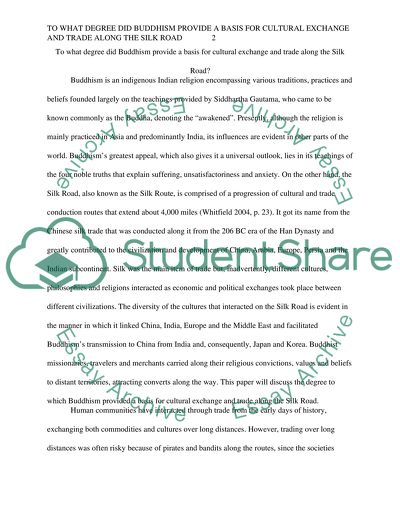Cite this document
(“To what degree did Buddhism provide a basis for cultural exchange and Essay”, n.d.)
Retrieved from https://studentshare.org/religion-and-theology/1496293-to-what-degree-did-buddhism-provide-a-basis-for
Retrieved from https://studentshare.org/religion-and-theology/1496293-to-what-degree-did-buddhism-provide-a-basis-for
(To What Degree Did Buddhism Provide a Basis for Cultural Exchange and Essay)
https://studentshare.org/religion-and-theology/1496293-to-what-degree-did-buddhism-provide-a-basis-for.
https://studentshare.org/religion-and-theology/1496293-to-what-degree-did-buddhism-provide-a-basis-for.
“To What Degree Did Buddhism Provide a Basis for Cultural Exchange and Essay”, n.d. https://studentshare.org/religion-and-theology/1496293-to-what-degree-did-buddhism-provide-a-basis-for.


